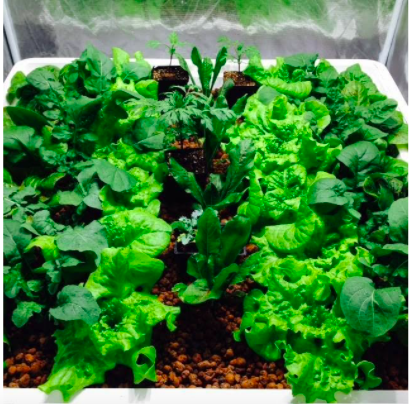
-James Gordon-
Greetings again all! It’s time for another installment in the Intro to Hydroponics blog series. So far in our last two blogs we have had an introduction to growing hydroponically, water quality, pH manipulation, pH meter calibration, and nutrient amalgamation. We have covered a lot! We’ll take it a bit easier this blog, with our focus on measuring dissolved salts to find out what strength our nutrient solution is after we mix the nutrients into water. From there we will talk about how that strength can affect plant health, and how your plant will literally show you what it wants more or less of. So let’s keep an open mind, maybe take some notes, and hopefully this will be a good tool to reference as you grow hydro.
After all the nutrient amalgamation and zeroing in on the desired pH, one might think, “Man, we have done all this stuff, let’s water our ladies!”. Hold up. We have another step to throw at you. Once all the other steps are done, you should also measure the dissolved salts in your reservoir. To do this we must first understand what units of measurement are used to obtain this data.
When it comes to conductivity of dissolved salts, three primary forms of measurement exist:
- Parts Per Million (PPM) – This measurement is the mass of a chemical or contaminate per unit volume of water.
- Total Dissolved Solids (TDS) – Measures dissolved solids comprised of inorganic salts and some small amounts of organic matter that are dissolved in water.
- Electrical Conductivity (EC) – The ability to conduct an electrical current, measured through the salinity and the total dissolved salts (TDS and salinity are used to calculate EC).
Now it’s up to you how to proceed from here and what measurement to use. We have meters that will read in multiple measurements. Bluelab instruments are what we will feature in this article but we have alternative meters and probes as well.

Some measuring tools have pH, temperature, and EC measuring capability. Browse around and find a product that does what you need it to do and works for your particular situation. Ultimately the meter you buy is a piece of lab equipment and should be treated as such. Keeping it clean and calibrated regularly is very important to the life of that equipment, but also even more important for the health of any plants you are feeding.
Now I will tell you what I use for my grows. Personally, I have a Bluelab Combo Meter. This thing does it all! pH, EC, Temp, and it has probes that you can drop down to the bottom of a bucket to take measurements from anywhere in your nutrient solution. Notice I said EC. For me EC is easier to remember since it’s only two digits compared to four. Not to mention you need TDS to measure to EC anyways, and PPM was originally intended to measure elements individually, not totally, like a TDS meter does. So for me it makes sense to use EC over other measurement forms. But everyone has their own preferences.
From here, your plant will react to all the nutrients you use differently, due to the different amounts you have added. Now we can measure and regulate those amounts added to water and make sure they are at the correct dosage after amalgamation (mixing). We all have our own recipes so here is a general range to stay in if you choose to measure in EC.
HPS LED
VEG- 1.3 – 1.6 EC 1.8 – 2.5 EC
FLOWER- 2.0 – 2.5 EC 2.4 – 3.0 EC
Using those measurements as a guideline, you can watch how your plant reacts positively and negatively, which in turn will tell you how to react. If you see deficiencies, identify them and then mix, pH, EC, and feed/treat those ladies. If you find yourself with too high of an EC, its a simple fix to bring it down. pH some water that has nothing but the pH adjustment in it and slowly pour/mix it into your high EC nutrient mix. This will bring down your EC. If you need to increase your EC level, add what nutrients you think you were lacking in the first mixture. Be sure to do everything according to procedure when upping the EC. Just like we have talked about in this three part series.
Well folks! That brings an end to our three part “Introduction to Hydroponics” Series. It has been my pleasure to talk to you all about my passion, and I hope this helps you in your endeavors. If you need any help or advice remember to call or come into one of our Fifth Season stores. Our staff would be happy to answer any and all questions you might have. All products talked about in this article are available in store and our online store as well. I am James at our Raleigh location, and it has been a pleasure talking Hydroponics with you. Thank you, Good luck, and plan before you plant. Cheers!

Leave a Reply